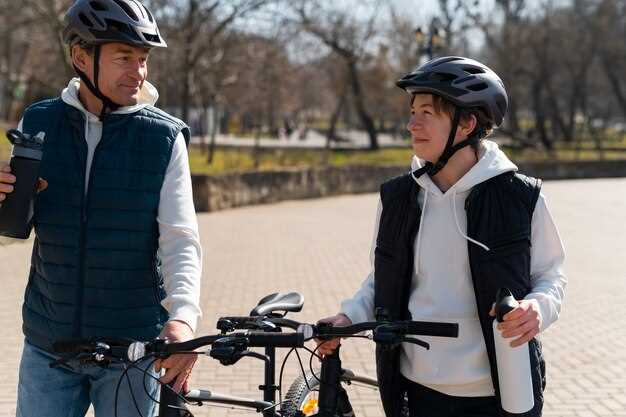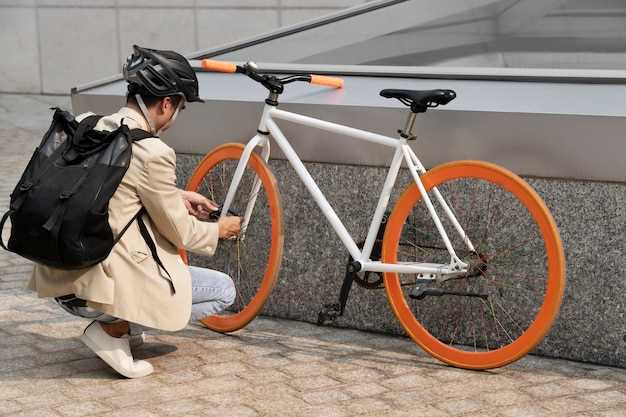
Ensuring safety on the roads is a shared responsibility between cyclists and drivers. As urban areas become increasingly crowded, the interaction between these two groups can lead to potential hazards if not managed properly. Understanding each other’s needs and behaviors is crucial for creating a harmonious coexistence on the road.
Both cyclists and drivers must prioritize safety to minimize the risk of accidents. This involves staying aware of each other’s presence, following traffic laws, and being mindful of designated lanes and signals. By fostering mutual respect and communication, we can enhance the overall experience of our commuting journeys.
In this article, we will discuss essential tips for safe road sharing that benefit both cyclists and drivers. By adopting these best practices, we can contribute to a more secure environment, making our roads safer for everyone involved.
Understanding Blind Spots: A Guide for Both Cyclists and Drivers
Blind spots are areas around vehicles that are not visible to the driver, posing a significant risk for both cyclists and drivers on the road. Understanding these zones is essential for ensuring safety while sharing the road. For drivers, blind spots are typically located behind the rear doors and in front of the passenger side. Cyclists must be aware that they can easily enter these zones, especially when vehicles are changing lanes or making turns.
To improve safety, drivers should make it a habit to check their mirrors and look over their shoulders before changing lanes. Equipping vehicles with blind-spot monitoring systems can also enhance awareness of surrounding traffic. Cyclists, on the other hand, should aim to avoid staying in blind spots. Staying visible by positioning themselves in the driver’s line of sight, using lights and reflective gear, can greatly reduce the chances of an accident.
Another key point is the importance of communication on the road. Cyclists should utilize hand signals to indicate their intentions, while drivers should signal well in advance of any maneuvers. This mutual understanding fosters a safer environment for all road users. Both parties are encouraged to stay alert, minimizing distractions, and being mindful of each other’s presence on the road.
In summary, recognizing and understanding blind spots is crucial for both cyclists and drivers to enhance road safety. By being proactive and attentive, all road users can contribute to a safer commuting experience.
Essential Hand Signals Every Cyclist Should Use to Communicate

Hand signals are crucial for ensuring the safety of both cyclists and drivers on the road. By effectively communicating intentions, cyclists can help prevent accidents and promote better understanding with motorists. Below are essential hand signals every cyclist should master.
Left Turn Signal: To indicate a left turn, extend your left arm straight out to the side at a 90-degree angle. This signal clearly demonstrates your intention to turn left and allows drivers to anticipate your movement.
Right Turn Signal: Cyclists can signal a right turn in two ways. One option is to extend your right arm straight out to the side, similar to the left turn signal. Alternatively, you can raise your left arm at a 90-degree angle with your elbow bent upwards, which is often more visible to drivers behind you.
Stop Signal: To indicate that you are slowing down or coming to a stop, extend your left arm downwards, keeping it perpendicular to the ground. This signal alerts drivers that you are reducing speed and prepares them to adjust accordingly.
Merge or Lane Change Signal: When preparing to merge into another lane or change positions on the road, extend your left arm out to the side in a horizontal position. This gesture shows that you are about to change your direction and allows surrounding vehicles to anticipate your movement.
Incorporating these hand signals into your cycling routine enhances safety on the road. Consistent communication fosters a cooperative driving atmosphere and makes shared spaces safer for both cyclists and drivers alike.
Best Practices for Drivers to Respect Cyclists on the Road

Ensuring the safety of cyclists on the road is a shared responsibility between all road users. Here are key practices that drivers can adopt to protect cyclists and promote a harmonious traffic environment.
Maintain a Safe Distance: Always give cyclists ample space when passing. The recommended distance is at least three feet to ensure their safety and comfort. This space allows cyclists to navigate bumps, potholes, or sudden obstacles without the risk of collisions.
Be Aware of Blind Spots: Large vehicles can have significant blind spots that may hide cyclists. Always check mirrors and look over your shoulder before changing lanes or making turns. Be particularly cautious at intersections where cyclists may be present.
Yield at Intersections: When approaching a stop sign or traffic light, be vigilant for cyclists. They have the same rights to the road as motorists. Yielding to cyclists when appropriate is crucial for ensuring everyone’s safety.
Use Turn Signals: Always signal your intentions when turning or changing lanes. This allows cyclists to anticipate your movements and react accordingly, reducing the chance of accidents.
Be Mindful of Weather Conditions: During adverse weather, visibility and road conditions can change dramatically. Slow down and approach cyclists with extra caution in rain, fog, or snow. Adjust your driving to ensure their safety as well as your own.
Respect Bicycle Lanes: If a designated bicycle lane is present, do not drive in it, park in it, or block it. These lanes are specifically designed for cyclists to travel safely, and doing otherwise compromises their safety.
Educate Yourself: Learning about local laws regarding cycling and understanding common cyclist behaviors can improve road sharing. Stay informed about cyclists‘ rights and responsibilities to foster a more conducive driving environment.
By implementing these best practices, drivers can help ensure the safety of cyclists on the road, creating a safer and more respectful community for all.



